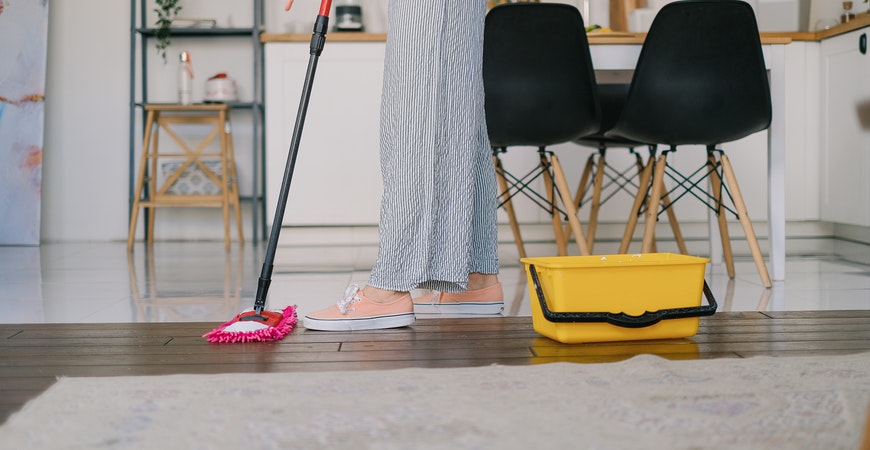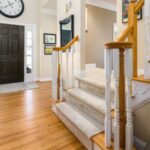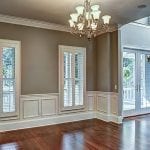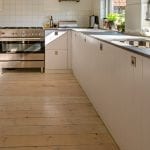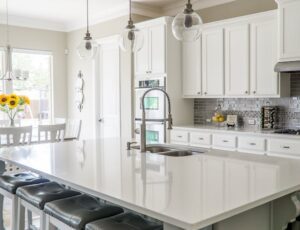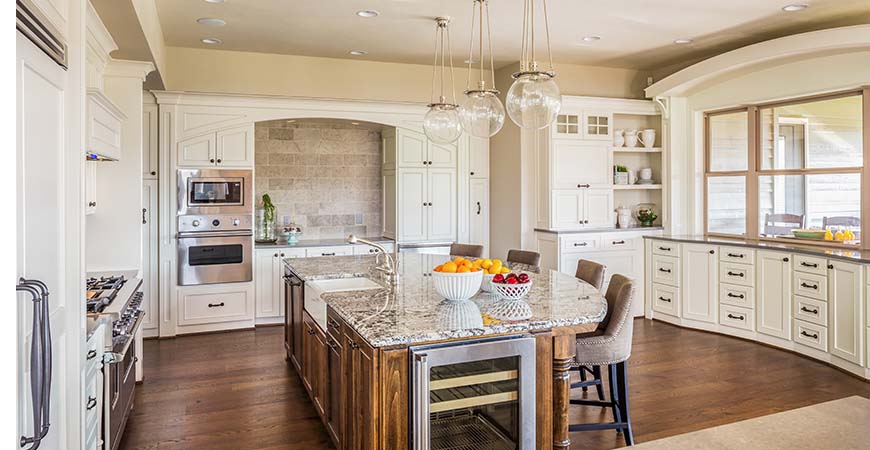
How Hardwood Floors Boost Your Home’s Value
A common adage says never to skimp on paying for things that touch the ground. That is, it’s worth it to spend the extra money on high-quality shoes, tires, and beds or mattresses. What that phrase leaves out, though, is the importance of the ground itself.
Hardwood floors aren’t exactly inexpensive. However, they are easy to maintain and help boost your home’s resale value by offering one of the best returns on investment of any flooring type. So whether you’re looking to install new flooring or refinish your existing floors, check out our guide below on hardwood floor installation and care.
Do hardwood floors increase your home’s resale value?
Hardwood floors add practical value to your home. They’re long-lasting and don’t require much effort to care for them. They’re aesthetically pleasing. Perhaps most importantly, hardwood floors increase the resale value of your home.
CNN estimates that hardwood floors can boost the price of your home by 3 to 5%. In addition, Realtor.com states the ROI on hardwood floors hovers around 70 to 80%, meaning their value almost doubles the initial investment.
Finally, the National Association of Realtors ranks new wood flooring and hardwood floor refinishing among the projects home sellers can undertake to appeal to buyers.
In fact, NAR found that of all interior projects (such as HVAC replacement, kitchen upgrades or renovations, and adding a new bathroom), installing new hardwood floors or refinishing already installed floors were the only ones likely to recoup their cost (and more) when homeowners sell their home. Put another way: hardwood floors are one of the few investments in life with a practically guaranteed positive return.
What type of hardwood floors should you get?
If you’re installing new hardwood floors in your home, there are a variety of factors to consider when choosing a type of wood:
- Aesthetics: The current trend is towards exotic woods or those with unique grain patterns, such as Brazilian cherry or ebony.
- Availability: With supply chain issues still creating lumber shortages, you may want to choose a widely available wood like oak, maple, or hickory.
- Budget: Bamboo, hickory, and maple are considered the most budget-friendly woods.
- Durability: For durable, scratch-resistant wood, consider looking at woods with high scores on the Janka hardness scale, like bamboo, cherry, live oak, and ebony.
Beyond the type of wood, you’ll also get to choose the type of flooring: solid hardwood and engineered hardwood. Both have their advantages and disadvantages.
Solid hardwood flooring is created from single pieces of wood and can be refinished multiple times. However, it must be installed over a wood subfloor and shouldn’t be used in areas with high moisture or humidity as the wood can warp or swell. While solid hardwood is more expensive, it can last you a century or more with proper care.
Engineered hardwood is created from multiple thin layers of compressed wood, polymers, and resin. The top layer is natural hardwood, giving it the classic look people want. You can install it on various flooring types and in areas with high humidity.
Due to its engineered nature, though, you may not be able to refinish the installed floors. And while the cost of engineered hardwood is comparatively low, that’s matched by its lowered durability. That is, engineered hardwood floors may only last a quarter as long as solid hardwood.
How much does it cost to install hardwood floors?
The national average for new hardwood floors ranges from around $2,500 to nearly $7,000. That wide range is due to the number of factors that goes into determining the total cost:
- Color, grain, and grade of the wood
- Flooring style
- Species of tree
- Thickness
- Type of hardwood flooring
Of course, this doesn’t include the cost of labor, which can also vary depending on whether they’ll need to tear out old flooring, repair the floor joists, and apply the finish after they’ve installed the new floors.
Depending on how intricate of a style you’ve chosen for your new floors, the hardness of the wood, and a couple of other factors, the cost of labor can easily match the price of the wood itself.
How do you clean hardwood floors?
There’s no real trick when it comes to cleaning hardwood floors. However, there are a couple of things you may want to avoid. Vacuums with beater bars, for instance, can scratch the surface of the wood.
Otherwise, though, the cleaning process is straightforward. If you own a pet or have small children, you should consider vacuuming or using a dust mop to clean up dirt, dust, and pet hair around once a week.
For deeper cleaning, try a commercial wood cleaning product or a homemade solution of one part vinegar to 10 parts warm water. Then use a sponge mop to apply the cleaner to the wood floor. When finished, make sure to wipe up any standing water.
To cover minor scratches, find a crayon that best matches the color of the floor. Then rub the crayon into the scratch and blowdry the area—Buff the area with a soft cloth to finish the job.
If you’re looking to take proactive measures against dirtying your hardwood, consider a few tactics. Doormats can reduce the amount of dirt tracked in from outside. Also, putting floor protectors under furniture or adding a strategically placed area rug will limit scratches.
When do you need to refinish your hardwood floors?
The general rule of thumb is to refinish your hardwood at least once a decade. However, if you’re beginning to notice these signs of a worn-down floor, you may want to speed up that frequency:
- Boards are separating, cupping, or showing other indications of water damage.
- Color is beginning to fade due to sun damage.
- Floorboards are losing their luster and beginning to turn gray or black.
- Scratches are appearing in significant numbers or growing in size.
If any of the above issues are slight or don’t appear to affect vast areas of the floor, you may only need to sand the wood. Refinishing, though, offers a reset of the wood and allows you to change up the style of your home.
For instance, you may want to choose a new finish that alters the hardwood color or restores its original look. So, refinishing your floors is a fantastic option even if you aren’t dealing with any of the above issues but want to give your home a new look.
How much does it cost to refinish hardwood floors?
The average cost to refinish your floors is between $1,000 and $2,500. If you already have hardwood floors installed, this can be a cost-effective way of boosting your home’s resale value.
The price can vary depending on where you live, and a few other factors:
- The condition of the floor
- The labor involved, such as sanding, staining, and moving furniture
- The need for additional repairs to the wood or its subfloors
- The size of the space
- The type of finish
While your DIY spirit may tempt you to tackle refinishing your hardwood floors yourself, you should consider hiring professionals. Finishing hardwood floors requires special equipment, like floor sanders and a cadre of other materials that can be expensive and time-intensive to purchase or rent.
If you are looking to reduce the cost, you have options. Handling some prep work yourself, such as moving furniture or tearing up carpet, will knock a few dollars off the quote. Cleaning up afterward can also save you money.
Of course, always consider getting bids from multiple contractors and check out their online reviews. What may seem like the cheapest option may quickly become the most expensive if they don’t get the job done right the first time.
Generally, hardwood floors are an excellent investment in your home due to their durability and how they boost the price of your home’s resale value. And if your home already has hardwood floors, refinishing them can help your home feel new again while also increasing its value on the market.



